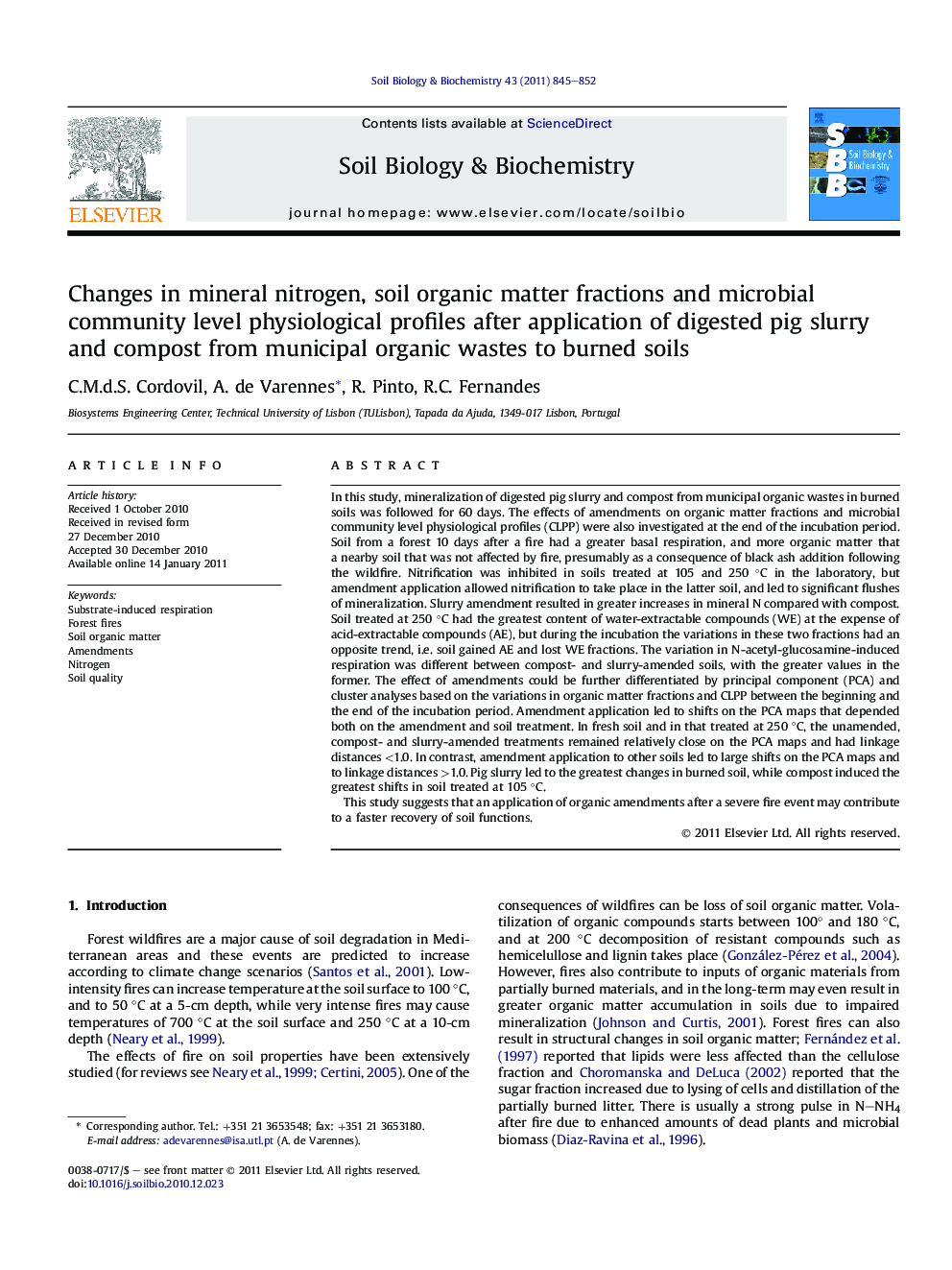| کد مقاله | کد نشریه | سال انتشار | مقاله انگلیسی | نسخه تمام متن |
|---|---|---|---|---|
| 2025464 | 1069997 | 2011 | 8 صفحه PDF | دانلود رایگان |

In this study, mineralization of digested pig slurry and compost from municipal organic wastes in burned soils was followed for 60 days. The effects of amendments on organic matter fractions and microbial community level physiological profiles (CLPP) were also investigated at the end of the incubation period. Soil from a forest 10 days after a fire had a greater basal respiration, and more organic matter that a nearby soil that was not affected by fire, presumably as a consequence of black ash addition following the wildfire. Nitrification was inhibited in soils treated at 105 and 250 °C in the laboratory, but amendment application allowed nitrification to take place in the latter soil, and led to significant flushes of mineralization. Slurry amendment resulted in greater increases in mineral N compared with compost. Soil treated at 250 °C had the greatest content of water-extractable compounds (WE) at the expense of acid-extractable compounds (AE), but during the incubation the variations in these two fractions had an opposite trend, i.e. soil gained AE and lost WE fractions. The variation in N-acetyl-glucosamine-induced respiration was different between compost- and slurry-amended soils, with the greater values in the former. The effect of amendments could be further differentiated by principal component (PCA) and cluster analyses based on the variations in organic matter fractions and CLPP between the beginning and the end of the incubation period. Amendment application led to shifts on the PCA maps that depended both on the amendment and soil treatment. In fresh soil and in that treated at 250 °C, the unamended, compost- and slurry-amended treatments remained relatively close on the PCA maps and had linkage distances <1.0. In contrast, amendment application to other soils led to large shifts on the PCA maps and to linkage distances >1.0. Pig slurry led to the greatest changes in burned soil, while compost induced the greatest shifts in soil treated at 105 °C.This study suggests that an application of organic amendments after a severe fire event may contribute to a faster recovery of soil functions.
Research highlights
► There is a new trend toward disposing of organic residues to improve the quality of burned soils.
► So far, the studies have concentrated on the consequences for plant growth and inputs of nutrients to impacted soils.
► As far as we know this is the first report on the effect on N mineralization and microbial communities of different amendments in burned soils.
Journal: Soil Biology and Biochemistry - Volume 43, Issue 4, April 2011, Pages 845–852